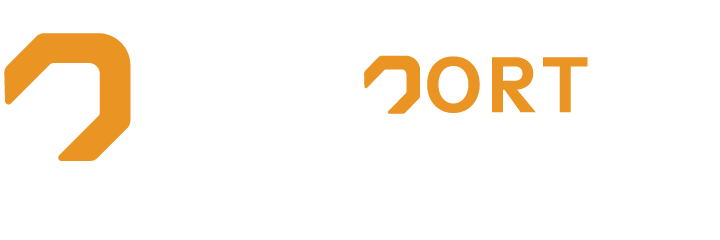Tanzania’s mining sector is a cornerstone of its economy, attracting significant investment and demanding robust, reliable machinery capable of withstanding some of the toughest geological and environmental conditions on earth. From the gold mines in Geita and Kahama to diamond operations in Mwadui and various other mineral ventures across the country, the success of any mining operation hinges critically on the quality and suitability of its equipment.
However, selecting the right mining equipment for Tanzanian conditions is a complex endeavor. It’s not simply about purchasing the biggest or most expensive machine. It requires a deep understanding of geological specifics, climate challenges, operational scale, regulatory compliance, and long-term maintenance considerations. A wrong choice can lead to costly downtime, inefficient extraction, increased operational expenses, and even safety hazards.
This comprehensive guide is designed to empower mining operators, project managers, and investors with the knowledge needed to make informed decisions. We will delve into the critical factors to consider when selecting mining machinery Tanzania, ensuring your investment translates into optimal productivity and sustainable operation.
Understanding Your Geological & Environmental Landscape
The ground beneath your feet dictates the machinery you need. Tanzania presents a diverse range of geological formations, from hard rock to softer alluvial deposits, each requiring a specific approach.
Rock Hardness and Abrasiveness
This is perhaps the most fundamental factor.
- Hard Rock Mining (e.g., Gold, Diamonds): Requires heavy-duty excavators, powerful drilling rigs, robust crushers, and haul trucks designed to handle abrasive materials. Equipment for hard rock needs higher tensile strength, specialized ground-engaging tools (GETs), and robust wear plates.
- Softer Deposits (e.g., Coal, Some Industrial Minerals): May allow for larger-capacity, but less intensely reinforced, machinery. Continuous mining machines might be considered for efficiency in appropriate conditions.
Climate and Terrain
Tanzania’s climate varies from humid coastal zones to arid interior plains and mountainous regions.
- Heat and Dust: High temperatures and dusty environments (common in many mining regions) place immense stress on engines, hydraulic systems, and air filters. Equipment must have superior cooling systems, advanced filtration, and sealed components.
- Rainfall and Mud: Seasonal heavy rains can transform mine roads into muddy, challenging terrain. Vehicles need excellent traction, high ground clearance, and robust suspension. Dump trucks and haul trucks must be capable of navigating these conditions without getting bogged down.
- Altitude: Operations at higher altitudes can impact engine performance. Ensure engines are appropriately sized or turbo-charged to maintain power output in thin air.
- Checklist Point: Have you conducted a thorough geological survey to determine rock type, hardness, and overburden?
- Checklist Point: What are the average temperature, humidity, and rainfall patterns at your mine site?
Operational Scale and Production Targets
The size of your operation and your desired output directly influence the capacity and type of equipment required.
Production Volume and Throughput
- Small-Scale vs. Large-Scale: A small artisanal or exploration operation will have vastly different needs than a large commercial mine aiming for millions of tons per year. Match equipment capacity (e.g., bucket size of an excavator, payload of a haul truck) to your desired daily or hourly throughput. Over-specifying can lead to unnecessary capital expenditure, while under-specifying leads to bottlenecks.
- Continuous vs. Batch Operations: Some operations benefit from continuous mining equipment for steady output, while others are better suited to batch processes using traditional load-and-haul methods.
Mining Method
- Open-Pit Mining: Typically uses large-scale excavators, hydraulic shovels, blast-hole drills, and massive haul trucks. Requires significant earth-moving capabilities.
- Underground Mining: Demands compact, specialized equipment like jumbo drills, load-haul-dump (LHD) loaders, and narrow-vein mining machines, often with emissions-controlled engines or electric drives for ventilation reasons.
- Checklist Point: What are your daily, monthly, and annual production targets?
- Checklist Point: What specific mining method (open-pit, underground, alluvial) will you primarily employ?
Equipment Type & Specialization – Matching the Task
Now, let’s look at the core categories of mining machinery Tanzania and their specific applications.
A. Excavation and Loading Equipment
- Hydraulic Excavators: Versatile workhorses for digging, loading, and trenching. Their size and bucket capacity should align with material density and desired throughput.
- Wheel Loaders: Efficient for loading trucks, moving stockpiles, and general material handling on level surfaces. Faster on-site mobility than excavators but less powerful for digging.
- Dozers (Bulldozers): Essential for pushing material, ripping hard ground, land clearing, and maintaining haul roads.
B. Haulage Equipment
- Rigid Dump Trucks (Haul Trucks): The backbone of large-scale open-pit haulage. Sizes vary dramatically; match payload capacity to crusher capacity and excavator output.
- Articulated Dump Trucks (ADTs): Better suited for challenging terrain, soft ground, and steeper grades due to their flexibility and all-wheel drive capabilities.
- Underground Haulage: Specialized trucks or LHDs designed for low clearances and tight turning radii.
C. Drilling Equipment
- Blast-Hole Drills: Crucial for efficient fragmentation in hard rock mining. Selection depends on hole diameter, depth, and drilling pattern.
- Exploration Drills: Used for core sampling and geological investigation.
- Jumbo Drills: Multi-boom drills used in underground operations for tunneling and drifting.
D. Processing Equipment
- Crushers: Jaw, cone, and gyratory crushers reduce rock size for further processing. Consider primary, secondary, and tertiary crushing needs.
- Screeners: Separate materials into different size fractions. Critical for efficient processing and product quality.
- Grinding Mills: Further reduce particle size for mineral liberation (e.g., ball mills, SAG mills).
- Checklist Point: Have you identified the specific tasks (digging, hauling, drilling, crushing) that each piece of equipment needs to perform?
Total Cost of Ownership (TCO) & Support
Beyond the initial purchase price, the long-term operational costs and available support significantly impact profitability. This is where a reliable mining equipment supplier Tanzania becomes invaluable.
Fuel Efficiency and Emissions
Fuel is a major operating expense. Research equipment with proven fuel efficiency ratings, particularly models with advanced engine technology designed for heavy-duty cycles. Compliance with emission standards is also becoming increasingly important.
Maintenance & Spare Parts Availability
- Reliability & Durability: Invest in equipment from reputable manufacturers known for their robust design and long lifespan in harsh conditions.
- Spare Parts Supply: This is paramount in Tanzania. What is the availability of genuine spare parts? What is the lead time for critical components? A supplier with a strong local inventory or efficient sourcing network, like Conport Company Limited, can drastically reduce downtime.
- After-Sales Support: Does the supplier offer technical support, scheduled maintenance, and field service? Proximity and responsiveness of service technicians are crucial.
Operator Skill & Training
Sophisticated machinery requires skilled operators. Consider the local availability of trained personnel or whether the supplier offers operator training programs. Ergonomics and ease of operation can also impact productivity.
- Checklist Point: What are the projected fuel consumption and maintenance costs?
- Checklist Point: Does the supplier guarantee quick access to genuine spare parts and offer comprehensive after-sales support?
Regulatory Compliance & Environmental Impact
Operating a mine in Tanzania means adhering to a strict set of regulations. Your equipment choices must reflect this.
Local Mining Regulations
Ensure all equipment complies with safety standards set by the Tanzanian Minerals Act and other relevant bodies. This includes specifications for safety features, emissions, and operational protocols.
Environmental Considerations
Modern mining strives for minimal environmental impact. Consider equipment with:
- Reduced Emissions: To minimize air pollution.
- Fuel-Efficient Engines: To lower carbon footprint.
- Noise Reduction: Important for community relations, especially near populated areas.
- Water Usage: Where applicable, consider equipment that minimizes water consumption.
- Checklist Point: Does the selected equipment meet all current Tanzanian mining safety and environmental regulations?
Partnering for Sustainable Mining Success
Selecting the right mining equipment for Tanzanian conditions is a strategic decision that requires careful consideration of geology, operational scale, specific tasks, long-term costs, and robust support. It’s a process where expertise makes all the difference.
At Conport Company Limited, we pride ourselves on being more than just a mining equipment supplier Tanzania. We are your knowledgeable partner, committed to providing the right solutions that drive efficiency, enhance safety, and ensure the long-term success of your mining ventures. Our extensive network allows us to source high-performance, durable machinery, backed by a clear understanding of the local landscape and the critical need for reliable after-sales support.
Don’t let equipment challenges hinder your production targets. Partner with experts who understand the nuances of the Tanzanian mining sector.
Ready to optimize your mining operations with reliable and high-performance equipment? Contact Conport Company Limited today for a consultation tailored to your project’s unique requirements.




